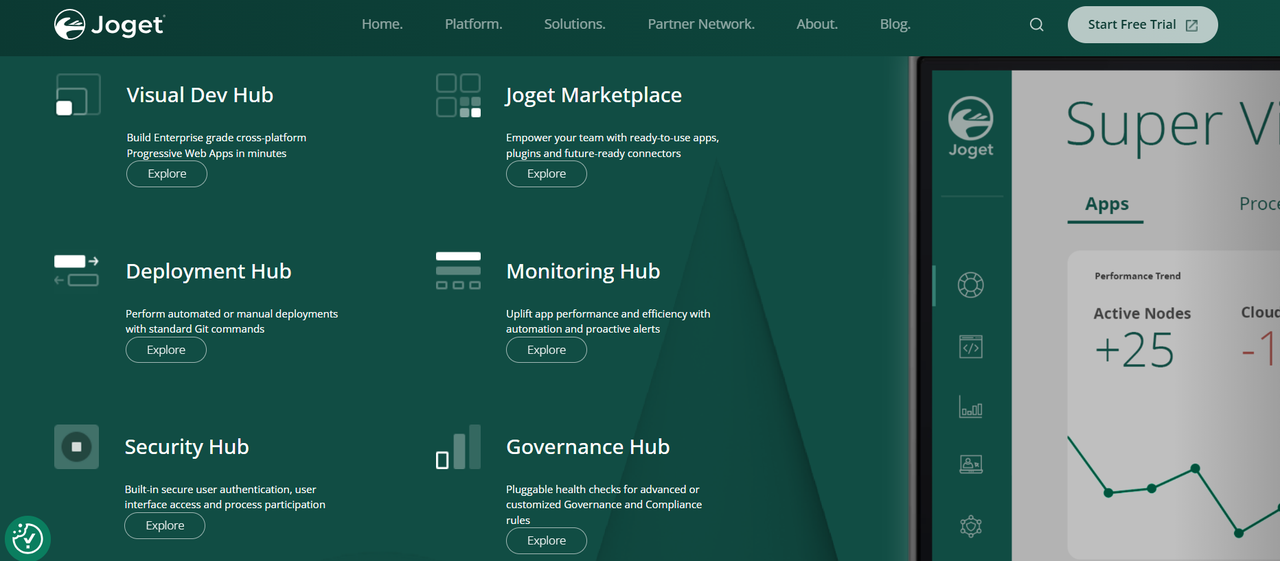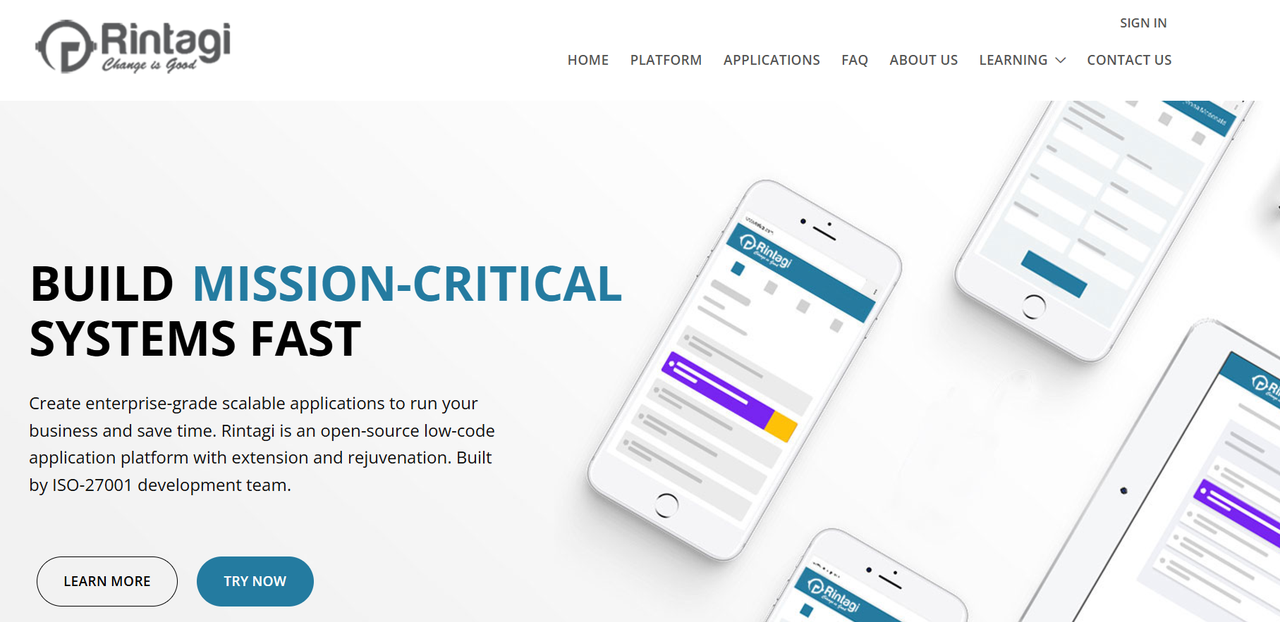Key Points
- Open-source rapid development platforms can significantly enhance development efficiency, typically reducing project delivery time by 20%.
- When choosing the right platform, it’s essential to consider the compatibility with the technology stack to ensure seamless integration with existing systems.
- Choose a platform based on project requirements, technical background, and budget. For projects needing high customization and a plugin-based architecture, NocoBase is an ideal choice.
What is a Rapid Development Platform?
A rapid development platform, also known as a Rapid Application Development (RAD) platform, is a development tool designed to accelerate application development and deployment by providing pre-built modules, automated workflows, and simplified programming interfaces. These platforms include both low-code and no-code solutions, enabling developers and non-technical users to build applications through visual interfaces and model-driven logic without extensive coding.
Advantages of Rapid Development Platforms:
- Improved Development Speed: By using pre-built components and automated workflows, developers can quickly prototype applications, shortening development cycles.
- Lower Technical Barriers: Low-code and no-code platforms enable non-technical users to participate in application development, fostering cross-department collaboration.
- Cost Savings: Due to faster development and reduced reliance on technical teams, businesses can save significant time and money in software development.
- Enhanced Flexibility and Scalability: These platforms often provide modular architectures, allowing applications to be adjusted and expanded based on evolving business needs.
Overview of top 7 open-source rapid development platforms
NocoBase offers a plugin-based architecture that supports flexible database management and application building, ideal for customized data management and internal tools.
Appsmith is an open-source low-code platform focused on internal tools and management dashboards, integrating various databases and APIs.
Budibase is a low-code platform designed for building internal tools, offering a rich template library and self-hosting options.
Joget DX is a low-code platform designed for quickly developing complex business processes, with a rich plugin library and cross-platform support.
Skyve is a powerful open-source rapid development platform that supports various application types, offering data modeling and automation tools.
Rintagi is an enterprise-level low-code platform focused on ERP and supply chain management systems, with dynamic scalability and a multi-language interface.
Saltcorn is an open-source rapid development platform designed for building simple applications through drag-and-drop, ideal for individual developers and small teams.
Now, we will provide a detailed introduction to the main functions, technical characteristics, and applicable scenarios of each platform. You can click on the directory to jump to the platform that interests you.
-
NocoBase
NocoBase Key Features
- Data Model-Driven: Supports complex data relationships and custom fields to meet diverse business needs.

- Workflow Automation: Built-in visual workflow designer simplifies the configuration of business process automation.

- Data Visualization: Provides various charts and visualization tools for intuitive data representation.

- Permission Management: Fine-grained access control to ensure data security.

- Plugin Extensibility: Modular architecture allows for third-party integrations and feature expansions.

Technology Features
NocoBase utilizes a decoupled front-end and back-end architecture, with Vue.js for the front end and Node.js for the back end. It supports multiple databases like MySQL and PostgreSQL and can be deployed on-premise or on the cloud. The plugin system allows for feature customization and Docker-based deployment simplifies operations.
Use Cases
NocoBase is perfect for teams requiring flexible database and application customization. It excels in project management, CRM, business process management, and other scenarios. NocoBase is ideal for small to medium-sized businesses and individual developers who need flexibility and customization.
🙌 Have a try: NocoBase Tutorial – Task Management System
💡 Read more: How to build apps with NocoBase?
-
Appsmith

Appsmith Key Features
- Visual Interface: Quickly design user interfaces using drag-and-drop components, reducing development complexity.
- Database Integration: Seamlessly connects with multiple databases, such as MySQL, PostgreSQL, and MongoDB, for effortless data management.
- API Integration: Easily connect to REST APIs and GraphQL, simplifying data interaction processes.
- Real-Time Collaboration: Team members can simultaneously edit and view projects, enhancing collaboration efficiency.
- Permission Management: Built-in user access control ensures data security.

Technical Features
Appsmith offers an intuitive development experience suitable for users with varying technical expertise. It supports integration with multiple data sources and third-party services to implement complex business logic quickly. Its open-source nature allows customization to meet specific development needs. Additionally, the platform benefits from a rich community, providing support and inspiration for developers.
Use Cases
Appsmith is perfect for teams needing to rapidly create internal tools. It excels in data management systems, customer support panels, and sales dashboards.
-
BudiBase

Budibase Key Features
- Template Support: Offers a variety of pre-built templates to jumpstart projects.
- Self-Hosting Options: Enables deployment on your own servers, ensuring data privacy and security.
- Component Library: Includes a rich set of UI components, reducing development time.
- Automated Workflows: Simplifies task automation through easy configuration, enhancing productivity.

Technical Features
Budibase prioritizes simplicity and flexibility, making it ideal for small to medium-sized businesses and individual developers. It supports self-hosting for full data control and features a modular architecture that allows functionality extensions while maintaining high performance and stability.
Use Cases
Budibase is particularly well-suited for small and medium-sized businesses and startup teams. It performs exceptionally in internal tool development, data visualization, and workflow automation.
-
Joget DX

Joget DX Key Features
- Process Designer: Design business processes effortlessly using a graphical interface.
- Plugin Support: Offers a rich plugin library for extending application functionality.
- Mobile Support: Enables cross-platform development for smooth operation on mobile devices.
- Real-Time Analytics: Built-in tools help users monitor and optimize business processes.

Technical Features
Joget DX features a modular architecture that supports integration with various databases and third-party services. Its cross-platform compatibility ensures seamless application performance across operating systems. With a vibrant community, Joget DX provides abundant technical support and development inspiration.
Use Cases
Joget DX is ideal for enterprises requiring rapid development of complex business processes. It excels in Customer Relationship Management (CRM), Human Resource Management (HRM), and Supply Chain Management scenarios.
-
Skyve

Skyve Key Features
- Data Modeling Tools: Built-in tools for quickly creating and managing complex data structures.
- Automated Development: Supports automatic code and interface generation, simplifying development processes.
- Modular Architecture: Provides highly extensible modular designs.
- Ready-to-Use Features: Includes user management, access control, and audit logs to reduce repetitive development work.

Technical Features
Skyve emphasizes development efficiency and flexibility, making it suitable for developers with some technical expertise. Its modular architecture allows developers to freely extend features as needed, while maintaining enterprise-level stability and performance. The platform’s rich ready-to-use components and tools make it stand out for fast-paced development, especially for applications with complex business logic.
Use Cases
Skyve is perfect for building applications requiring complex data modeling, cross-platform support, and enterprise-grade internal tools. It shines in fields like Customer Relationship Management (CRM) and Enterprise Resource Planning (ERP).
-
Rintagi

Rintagi Key Features
- Application Template Library: Offers a variety of templates to facilitate the development of ERP, supply chain management, and other business systems.
- Dynamic Expansion Architecture: Adjusts system structures to align with business changes.
- Multi-Language Support: Supports multilingual interfaces and multi-regional deployments, enabling international operations.
- Custom Rules Engine: Built-in business rules engine simplifies the implementation of complex logic.

Technical Features
Rintagi’s dynamic architecture is its standout feature, allowing applications to be rapidly adjusted and expanded as business needs evolve. The platform caters to enterprises with long-term plans, offering flexibility and a low learning curve for collaborative development between technical teams and business units.
Use Cases
Rintagi is highly suitable for building and continuously expanding enterprise-level systems. It is effective in ERP, financial management, and supply chain scenarios, especially for multilingual and multi-regional deployments.
-
Saltcorn

Saltcorn Key Features
- Drag-and-Drop Interface: Users can create applications quickly by dragging and dropping components, without requiring programming skills.
- Data Management: Facilitates easy management and operation of database data.
- Plugin Extensions: Offers a rich library of plugins to meet functional needs across various scenarios.

Technical Features
Saltcorn’s architecture is simple and intuitive, making it ideal for beginners and small teams. It supports integration with multiple databases like PostgreSQL and SQLite, ensuring flexibility in data storage. Saltcorn’s modular design enables users to add or remove components as needed, greatly enhancing platform scalability.
Use Cases
Saltcorn is well-suited for individual developers, small teams, and the education sector. It excels in creating simple internal tools, data management systems, and prototype designs.
Related reading:
- Exploring RAD: 5 Best Application Cases
- Discover Top Tools: Accelerate Web Application Development
- Top 5 Success Cases of Low-Code Open-Source Platforms
- How to build apps with NocoBase?
- Top 5 Open-source App Builder Tools with the Most GitHub Stars
- ⭐️ Top 10 Open-source Workflows Projects with the Most GitHub Stars
